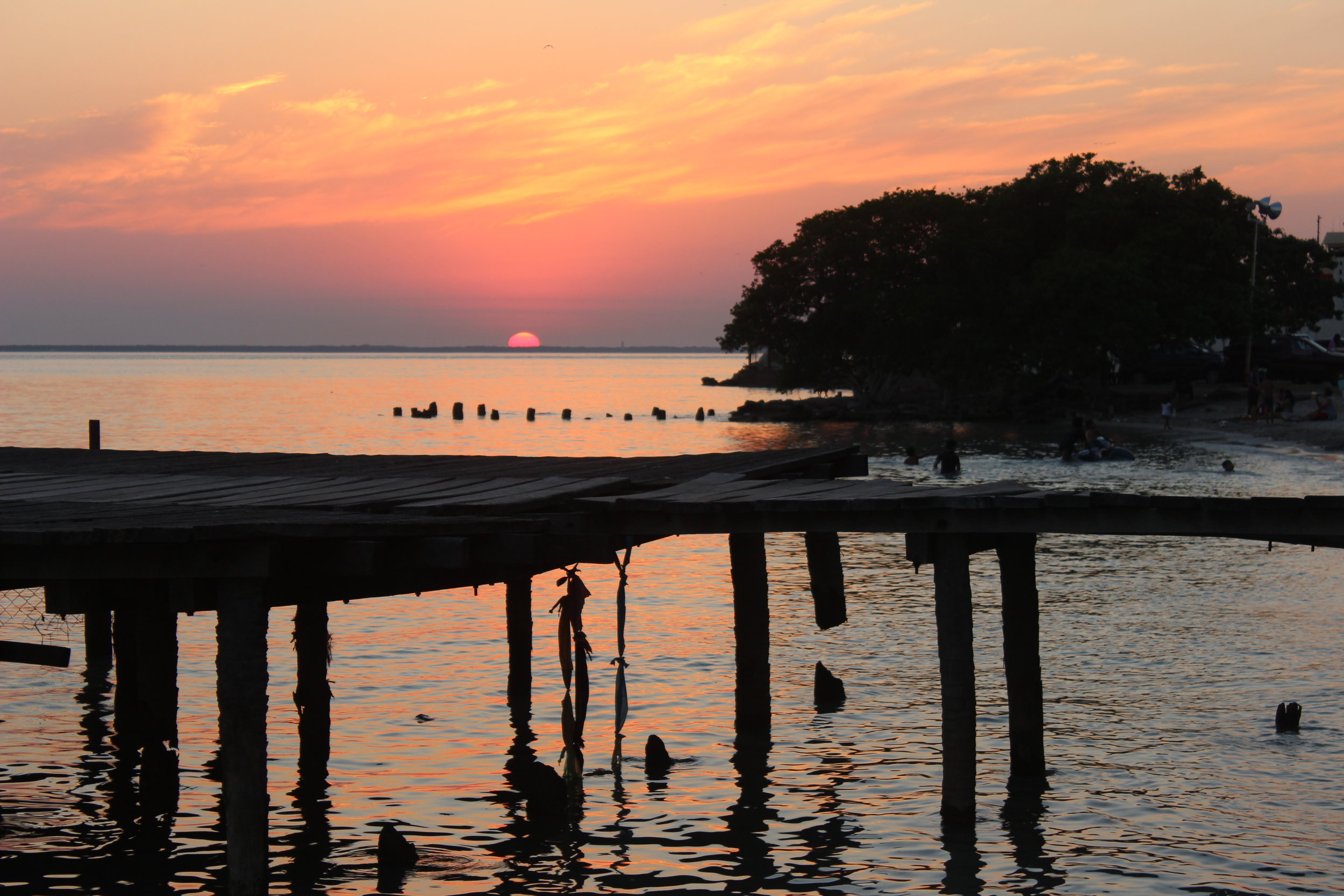Sticking glue like to the Gulf of Mexico coast, our next stop, Ciudad del Carmen, is well off the beaten track.
A small city devoted to fishing until the 1970s when oil was discovered in the region; since then it has grown and developed substantially. To this day Carmen is known as one of the best locations to find seafood in Mexico. As late as the early 1980s the city could only be reached by ferry boats called "pangas" or small motorboats ("lanchas") operating between Ciudad del Carmen and Zacatal; this changed with the construction of a causeway bridge to the mainland in the 1980s (eastbound) and another one in 1994 (westbound). The construction of the first bridge was motivated by the sinking of one of the island's pangas which resulted in the death of nearly everyone on board. The bridge Puente El Zacatal, constructed in 1994, is one of the longest in Latin America. (Ed's note: cheers Wikipedia!)
The recent plunge in oil prices pulled the rug out from CdC's boom times and what we found was a town with plenty of hotel rooms but not many guests. A poor town with a big bridge across which not much traffic flowed. A town reverting to the fishing industry which had been its life-blood before the gush of black gold!
Our hotel was just 25 quid a night including Desayuno Caliente. We stayed four nights! Needed a rest after 1,000 km of road in a week. From our room we saw fleets of high powered fishing launches speeding in from the lagoon. We went to investigate!
Fishing poverty is the best way to describe it! The photos tell it better than any words.
Cocteleria Cajun, our local fish restaurant, certainly did have fantastic seafood. Aguachile awesome - and Coctel de Camaron (served in a tall glass with mucho salsa picante) was fresh n spicy! Ate there every day. Packed with locals! The only Gringos in town got lots of attention!!
Perhaps a legacy of the Black Gold were the Black Squirrels in CdC's Plaza Principal. Surely Darwin's theory is disproven by a black pelted animal in such hot and sunny climes!?























